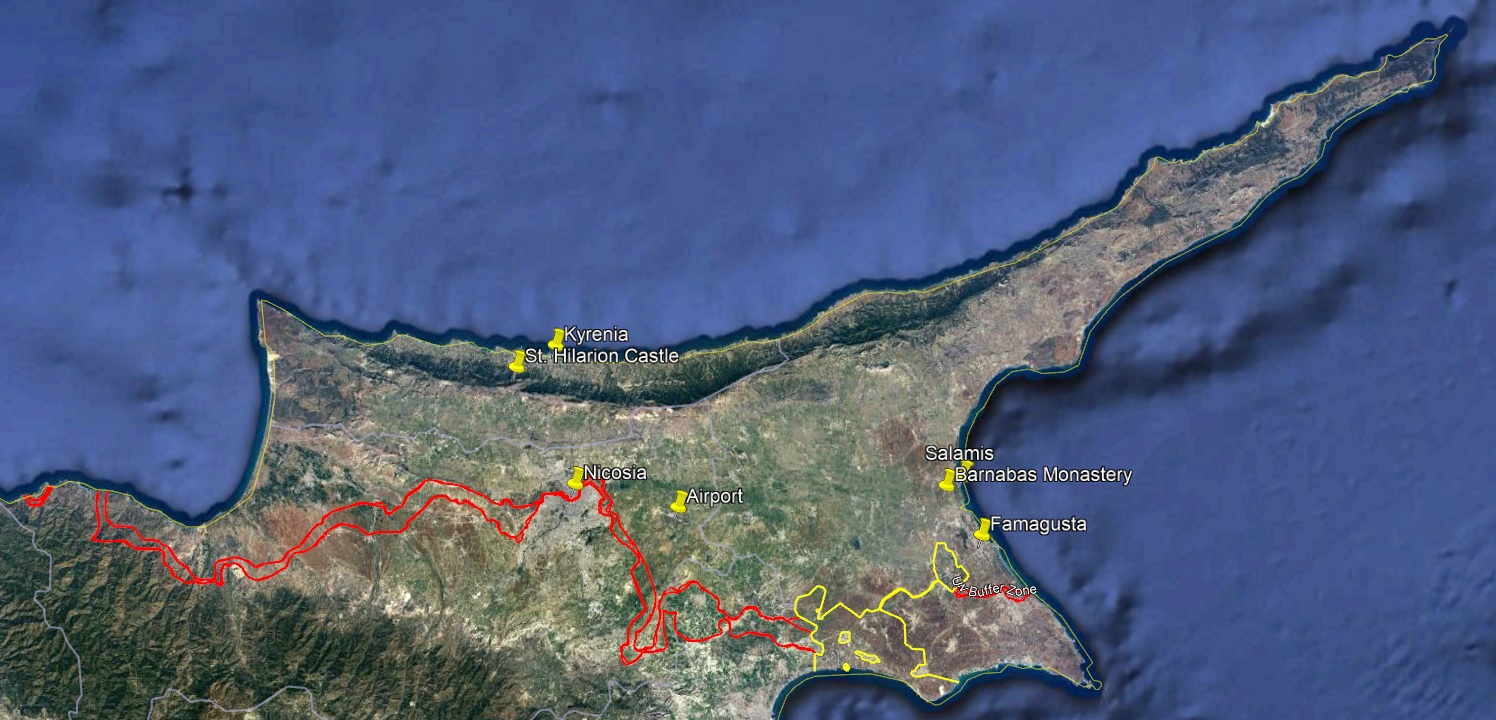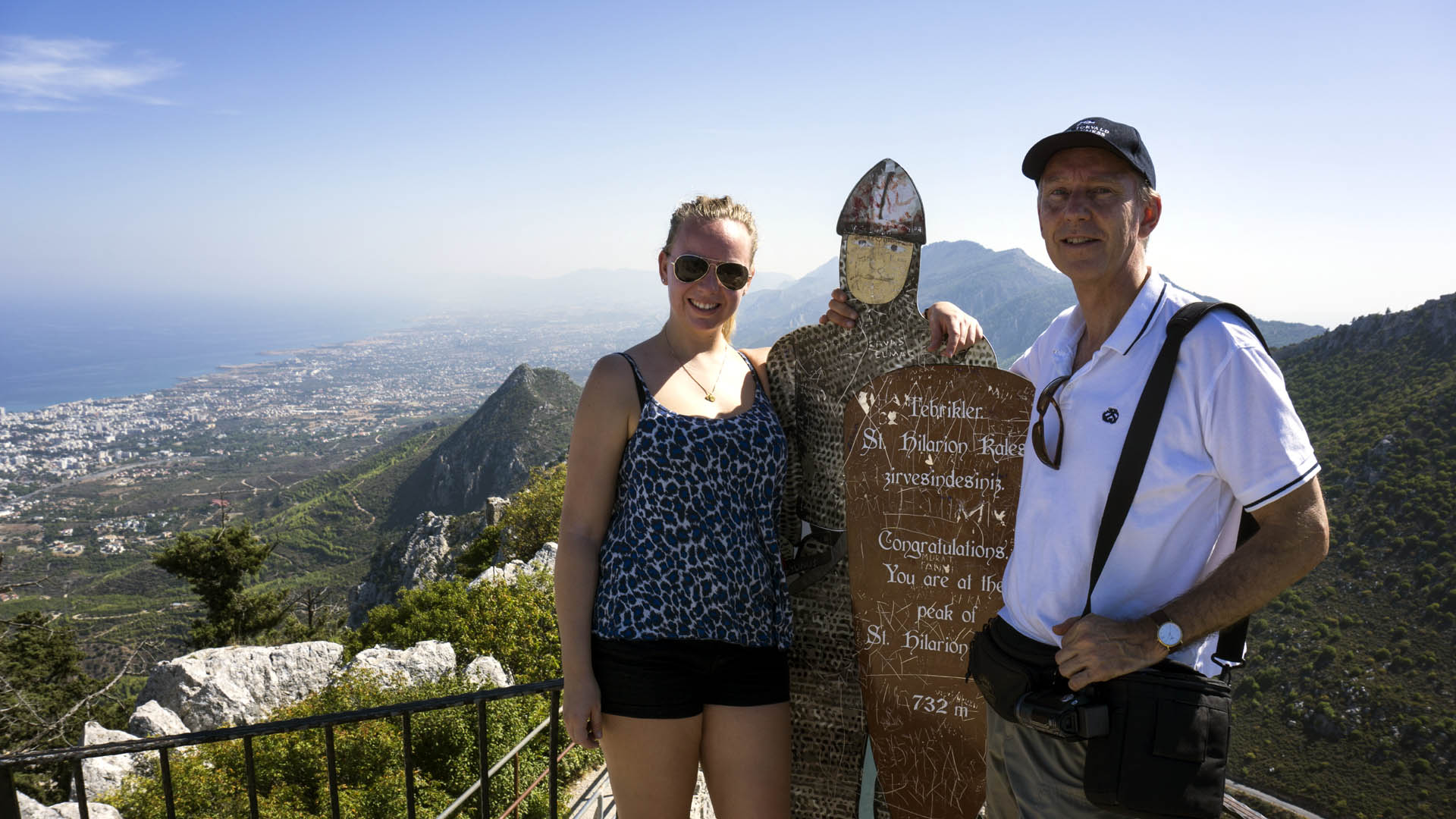
Northern Cyprus
– officially the Turkish Republic of Northern Cyprus, is a partially recognized state – recognized only by Turkey. Northern Cyprus is considered by the international community to be part of the Republic of Cyprus (Southern Cyprus).
A buffer zone under the control of the United Nations stretches between Northern Cyprus and the rest of the island and divides Nicosia, the island’s largest city and capital of both sides. Attempts to reach a solution to the Cyprus dispute have been unsuccessful.
Northern Cyprus is a semi-presidential, democratic republic with a cultural heritage incorporating various influences and an economy dominated by the services sector. The economy has seen growth through the 2000s and 2010s, but is held back by an international embargo due to the official closure of the ports in Northern Cyprus by the Republic of Cyprus. The official language is Turkish, with a distinct local dialect being spoken. The vast majority of the population consists of Sunni Muslims, while religious attitudes are mostly moderate.
Bellapais Monastery
North Cyprus, October 2015
Bellapais Abbey is the ruin of a monastery built by Canons Regular in the 13th century on the northern side of the small village of Bellapais, about five kilometres from the town of Kyrenia. The ruin is at an altitude of 220m above sea level, with good view down to Kyrenia and the Mediterranean Sea.
The abbey consists of a church and a cloister, with most of the monastic buildings surrounding the cloister. The Abbey’s main entrance is through a fortified gate on the south side, with a tower that is a later addition, and a forecourt. The gateway replaced an earlier drawbridge. The forecourt leads to the cloister, which has 18 arches.
St. Hilarion castle
North Cyprus, October 2015
The Saint Hilarion Castle lies on the Kyrenia mountain range. This location provided the castle with command of the pass road from Kyrenia to Nicosia. It is the best preserved ruin of the three former strongholds in the Kyrenia Mountains. The castle is not named after St. Hilarion, active in Palestine and Cyprus in the 4th century, but after an obscure saint who is said to have fled to Cyprus after the Arab conquest of the Holy Land. Starting in the 11th century, the Byzantines began fortification as defence against Arab pirates raiding the coast. Much of the castle was dismantled by the Venetians in the 15th century to reduce the up-keeping cost of garrison
Kyrenia castle and harbour
North Cyprus, October 2015
Kyrenia is a town on the north coast of Cyprus, and has been populated since ca. 5800–3000 BC. It is traditionally accepted that the city was founded by Achaeans from the Peloponnese after the Trojan War. As the town grew prosperous, the Romans established the foundations of its castle in the 1st century AD. Kyrenia grew in importance after the 9th century due to the safety offered by the castle, and played a pivotal role under the Lusignan rule as the city never capitulated. The castle has been most recently modified by the Venetians in the 15th century, but the city surrendered to the Ottoman Empire in 1571.
One day tour to Salamis and Famagusta.
North Cyprus, October 2015
Barnabas from Cyprus was one of the prominent Christian disciples in Jerusalem. Barnabas was martyred at Salamis, Cyprus, in 61 AD.
Salamis was an ancient Greek city-state on the east coast of Cyprus, 6 km north of modern Famagusta. The earliest archaeological finds go back to the 11th century BC.
Famagusta was the island’s most important port city was founded around 274 BC. During the Turkish invasion in 1974 Famagusta’s entire Greek Cypriot population fled believed that once the violence calmed down they would be allowed to return. A suburb of Famagusta was fenced off and remains fenced off today.
Nicosia
North Cyprus, October 2015
On our way from Kyrenia to the airport, we stopped a few hours in Nicosia. We visited the Selimiye Mosque which is a former Roman Catholic cathedral converted into a mosque, and a 16th century caravansary.
Nicosia is the capitol in Cyprus, but it is divided into Turkish and Greek districts. There are two checkpoints in Nicosia, and it is possible to cross the border if you show your passport. We crossed over just to have been on the Greek side; showed our passports, walked over, had a Greek lunch, and walked back – have been there!

Link to Flickr: Photos from a roundtrip in North Cyprus and Turkey
In Flickr; click on the slide show button ("TV symbol") in the upper right corner
